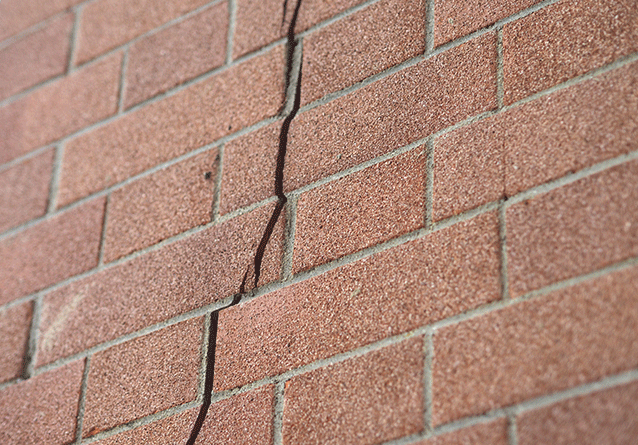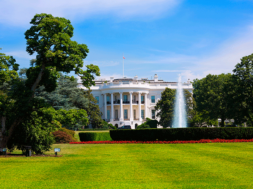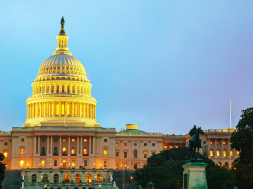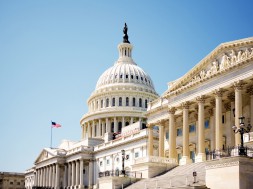
The Debate Over the 90/10 Calculation … it’s Like Arguing Over How to Design the Interior of a Home That is Built on Land With a Bad Foundation
By Aaron Shenck, Executive Director, PAPSA
I enjoy advocating for schools, both in state capitols and Washington D.C. Although I consider myself a political junkie and love to engage in policy debates on many issues that impact schools positively or negatively, probably the one issue I find the most insufferable to listen to is the debate over the federal “90/10 Calculation.”
For those people reading this article who may not be familiar with 90/10, it is a federal requirement applied to proprietary institutions of higher education that requires at least 10 percent of total tuition revenue received at a school must come from non-federal student financial aid (Title IV) sources. This is often by students having to pay out-of-pocket cash.
This rule has existed for several decades and has evolved over time. There are times it comes up for debate for further changes, and we are in one of those times right now.
The U.S. Senate and U.S. House, along with several state legislatures now, are debating various changes to 90/10, including; potentially shifting to 85/15 or 80/10, or adding in veterans funding, or all federal and state sources, or even proposing to add institutional debt into the calculation. This debate is counterproductive to students, schools and the workforce.
Quite frankly, the only debate that should be happening on this issue is when will the entire rule get scrapped? Or, when will the government start to seriously look at real outcome measurements and come up with a replacement to 90/10 for all institutions of higher education, instead of a flawed accountability measurement that is cherry-picked to apply only to some schools?
This debate actually did get a serious start when current U.S. Senate Health, Education, Labor and Pension (HELP) Committee Chairman Lamar Alexander released a White Paper in 2018 with policy proposals that his office believed would/should be considered in the pending reauthorization of the Higher Education Act (HEA). The White Paper reviewed the statutory history of 90/10, its intent, its failure to achieve that intent, and whether or not it should be repealed and/or replaced with a more meritorious alternative.
This proposal to end 90/10 got a short-term splash in some press, but then after the usual forces in Washington D.C. pushed back on it, the idea to repeal 90/10 seemed to have once again been placed back on the shelf. The debate now is whether or not to expand 90/10 to include additional federal sources, and whether it should apply to all institutions.
The debate on expanding 90/10 to include additional sources is like debating how you design the inside of a house that is built on a foundation that will cave in. The underlying policy that is the foundation of 90/10 is inherently bad public policy, so any discussions on expanding it is simply doubling-down on bad policy.
The foundation of the 90/10 policy makes no rational sense, serves no academic purpose, hurts low-income populations, is counterproductive to students and social mobility, punishes schools educating low-income students, and “may” potentially violate the U.S. Constitution. Also, current debates over possibly adding veterans’ funding to the calculation will hurt veterans by limiting their academic choice. It is also perplexing that many politicians who support 90/10, also support various “free college” proposals, which is one of the most inconsistent and arbitrary higher ed policy positions someone can have. I will explain all of these arguments in more detail in this article.
First, although advocates for 90/10 try to make the case it is an institutional accountability tool, that argument simply carries no weight.
The 90/10 rule is not an outcome measurement at all and does not measure anything related to academic quality.
The truth is not one variable contained in the calculation has anything to do with the education a student receives or the value of the education in the real world. This fact needs repeating … Not one variable or any aspect of 90/10 has anything to do with educational outcomes. The only variables used in the calculation measure the wealth of the schools’ student populations, the cost of the program, and how much financial aid through federal sources the student had to access to complete the program. That’s it. These are all financial numbers and have nothing to do with academics or whether a program is quality or not.
The argument made by advocates for 90/10 is they believe requiring students to come up with at least 10 percent of their tuition, shows the student has “skin in the game” and the student would only do this if they feel the education is worth it. But many of these students have very little – to no – “skin” of their own to offer … Many of them are poor, or maybe they are middle-income but are trying to balance multiple financial obligations and cannot afford to pay several thousand dollars out-of-pocket at one time on education. The only way these populations can afford higher education is through grants and loans, typically from federal sources. Wouldn’t a student agreeing to have a loan that they will need to pay off through time be enough evidence to show they believe the education is quote “worth it?”
Schools located in lower-income areas who are helping social mobility by educating low and middle-income students and placing them into jobs that can lift them out of their current socio-economic status, are at a higher risk to fail this arbitrary government metric. Why would the government create a rule that punishes schools that teach a higher percentage of low-income students and reduces the ability of these students to get educated in careers that can help them advance their income level?
There are many politicians who are on record supporting 90/10, while also publicly supporting various “free college” proposals under consideration. These two policy positions run counter to each other and are a paradox.
Free college proposals are basically the government removing all financial skin from the game for students. Think about that for a second and let it soak in…
So, there are some politicians who believe government funding 100 percent of a college education is a great idea and a very noble policy position, and apparently, they also think government funding anywhere from 0-89 percent is also acceptable. However, for some reason, they argue the bandwidth from 90-99 percent of government funding is somehow not acceptable. Let me get this straight… 100 percent of government funding is great, 0-89 percent government funding is ok, but 90-99 percent … well, those schools are bad and should close … Huh? Can anyone please explain the rationality in this?
Another reason why 90/10 is bad public policy is it is arbitrarily applied to one sector of higher education. Only schools registered as “for-profit” under the IRS and U.S. Department of Education tax status, must abide by this rule. Most technical colleges and career schools across the country are registered as “for-profit” and must comply with this rule.
Other sectors of higher education do not have to comply. And the dirty secret is that many of these institutions would fail 90/10 if it was applied to them too. According to the U.S. Senate White Paper from 2018 previously reference, here is a quote in it:
“A report by higher education finance expert Mark Kantrowitz that applied 90-10 to all colleges (not just for-profits, as the rule stipulates) estimated that 80 percent of public two-year colleges and 40 percent of public four-year colleges would fail the rule if it applied to them. Unless we believe that nearly all of our nation’s two-year schools are low quality, these findings suggest that 90-10 is neither a good accountability tool nor a measure of quality, but merely an indicator of the level of government support for low- and middle-income students”
If the politicians and advocates who truly believe 90/10 is a good policy, then why not apply it to all institutions of higher education? Why cherry-pick one sector and make the rules harder on them. For-profit institutions are already at a competitive disadvantage to other sectors because they do not qualify for many direct government subsidies like other schools and because they are not exempt from some taxation. Why would the government then layer additional impediments on these schools and not others? Particularly since many of these schools are providing critical skills and career training that is often not provided by traditional higher education.
To make this even worse, some politicians and advocates, now want to add federal earned veterans funding into the 90 percent side of the calculation. Currently, only federal entitlement funds (anyone is eligible based on income) are counted on the 90 percent side. Veterans funding has always been viewed differently because it was earned by serving our country. I would argue the whole “skin in the game” argument should be thrown out when discussing earned veterans’ benefits. These students literally put their life on the line to serve our country, so I think they passed the skin in the game test already.
To compound this issue, career and technical education are often preferred by veterans returning from service. Many of them want a shorter-term education that gets them skilled-training in a high demand job field and employed sooner. They often do not want to spend four years (or more) getting a liberal arts education when they are already in their late 20s or 30s. Policies like 90/10 are hurting veteran students by limiting their choice of institutions they can apply their earned benefit to. The schools veterans often prefer are the same schools that are often subject to 90/10.
Although all previous arguments above, I would argue are based on facts. My final argument below is opinion.
Although I am not an attorney, have never played one on tv, nor did I stay at a Holiday Inn last night, I believe the 90/10 rule may be unconstitutional, particularly on Equal Protection Clause arguments.
I am not aware of previous constitutional challenges to 90/10, but if anyone reading this article is aware, please email me the cases. However, I am aware of numerous court cases in other sectors of education and in other industries, where courts have decided that policies of “red-lining” against poor communities is unconstitutional. In my opinion, the 90/10 rule is a policy that could unintentionally lead to educational red-lining. I have spoken to school leaders with operations currently located in low-income areas and many of them have told me they are doing everything they currently can to keep educating these students, while staying compliant to 90/10. However, it is already difficult for them to keep this balance, and if 90/10 gets expanded, they do not know how they will maintain compliance without making changes that threaten their ability to educate low and middle-income populations.
Simply put, the foundation of 90/10 is bad public policy. Let’s stop debating design changes to it and start debating how to correct the foundation.
AARON SHENCK is the Executive Director of PAPSA, which is a Pennsylvania-based state association that represents approximately 100 technical colleges, trade schools and career schools in several states. Its membership includes both for-profit and non-profit schools that teach a diverse number of career fields and trades. PAPSA also has several dozen associate members, which are companies who provide products and services to schools. Prior to PAPSA, Aaron served over 15 years in Government Relations and Legislative Affairs, with a specialization on education legislation and policy. He worked for four years as a Legislative Director for the Pennsylvania Governor, seven years as a Committee Director and Legislative Director in the Pennsylvania Senate, and four years as a Legislative Director in Pennsylvania House of Representatives. He also interned for two years with the U.S. Congress. Aaron holds a BA in Political Science from Millersville State University and a Masters in Government Administration from Penn State University.
Contact Information: Aaron Shenck // Executive Director // PAPSA // 717-599-8098 // aaron@papsa.org // www.papsa.org











